Director: Lucius Henderson
Cast: James Cruze, Marguerite Snow, Harry Benham,
Marie Eline, Jane Gail, Florence La Badie
Marie Eline, Jane Gail, Florence La Badie
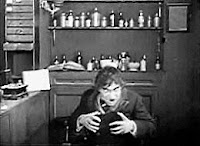 Dr. Jekyll believes that with the right combination of drugs, man's two dominant personalities -- good and evil -- can be separated from one another. Using himself as a guinea pig, Dr. Jekyll drinks a phial of the formula he has been working on. A painful transformation occurs and the good doctor's vile alter ego, Mr. Hyde, emerges not only in personality but as a hideous physical manifestation. This Hyde persona thrives on rage and takes great pleasure in harming others. Despite this, Dr. Jekyll continues to take the formula until Hyde is able to resurface at will. Dr. Jekyll must now atone for his sins after Hyde attempts to murder the Minister's daughter, whom Jekyll has been courting. At the cost of his own life, the Minister manages to rescue his own daughter, but Hyde then turns his murderous intentions on him and bludgeons the holy man to death with a cane. As the police pursue Hyde to Jekyll's study, questions begin to arise.... Who will the law officials encounter? And what will become of Dr. Jekyll and Mr. Hyde? Watch and find out!
Dr. Jekyll believes that with the right combination of drugs, man's two dominant personalities -- good and evil -- can be separated from one another. Using himself as a guinea pig, Dr. Jekyll drinks a phial of the formula he has been working on. A painful transformation occurs and the good doctor's vile alter ego, Mr. Hyde, emerges not only in personality but as a hideous physical manifestation. This Hyde persona thrives on rage and takes great pleasure in harming others. Despite this, Dr. Jekyll continues to take the formula until Hyde is able to resurface at will. Dr. Jekyll must now atone for his sins after Hyde attempts to murder the Minister's daughter, whom Jekyll has been courting. At the cost of his own life, the Minister manages to rescue his own daughter, but Hyde then turns his murderous intentions on him and bludgeons the holy man to death with a cane. As the police pursue Hyde to Jekyll's study, questions begin to arise.... Who will the law officials encounter? And what will become of Dr. Jekyll and Mr. Hyde? Watch and find out!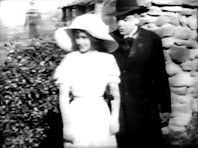 This Thanhouser Company production of Dr. Jekyll and Mr. Hyde was directed by Lucius Henderson and is the oldest surviving film version of the tale still in existence. Sadly, earlier movie adaptions of Robert Luis Stevenson's horror-mystery novella Strange Case of Dr. Jekyll and Mr. Hyde (1886; Longmans, Green and Co.) remain lost.
This Thanhouser Company production of Dr. Jekyll and Mr. Hyde was directed by Lucius Henderson and is the oldest surviving film version of the tale still in existence. Sadly, earlier movie adaptions of Robert Luis Stevenson's horror-mystery novella Strange Case of Dr. Jekyll and Mr. Hyde (1886; Longmans, Green and Co.) remain lost. Like most stage and cinematic adaptions, the Thanhouser film shies away from the mystery aspect of Stevenson's book. This may be due, at least in part, to the worldwide familiarity of the character(s) and that most of the public is already aware that Jekyll and Hyde are the same person. Originally, Stevenson's story did not reveal that fact until the climax of the tale! Here, director Lucius Henderson (A Witch of Salem Town; The Heart of a Mermaid) wastes no time in showcasing Jekyll's famous transformation into Mr. Hyde!
Like most stage and cinematic adaptions, the Thanhouser film shies away from the mystery aspect of Stevenson's book. This may be due, at least in part, to the worldwide familiarity of the character(s) and that most of the public is already aware that Jekyll and Hyde are the same person. Originally, Stevenson's story did not reveal that fact until the climax of the tale! Here, director Lucius Henderson (A Witch of Salem Town; The Heart of a Mermaid) wastes no time in showcasing Jekyll's famous transformation into Mr. Hyde! James Cruze (The Pied Piper of Hamelin; She) plays both title roles, but it is his transformation into the fanged and grotesque Mr. Hyde that warrants the most attention. An Excellent performance by Cruze easily pulls the audience in, making the ghoulish caricature of the deformed madman very believable. In this film production, the creature's bizarre physical mannerisms, serve as a precursor to John Barrymore's famous and similar portrayal in the 1920 feature-length movie. However, as compelling as Cruze was in the role, he can no longer be given full credit. Decades after the film was released, actor Harry Benham (The Mummy; Cinderella) astounded everyone when he finally revealed that he also portrayed Hyde in certain scenes! "As Cruze and I were the same size, we could wear the same clothes and wig, but not the same set of false teeth! We had separate sets, which we kept attached with the same powdered mastic that denture wearers use today. What I remember most about the making of the picture is that we were constantly changing clothes after almost every scene. In those days pictures were turned out like a butcher grinds out sausage. Sometimes it took only three days to turn out a one-reeler, but this one was slower because of the delays in changing the characters, so it lasted over a week of filming, much to Thanhouser's chagrin!".
James Cruze (The Pied Piper of Hamelin; She) plays both title roles, but it is his transformation into the fanged and grotesque Mr. Hyde that warrants the most attention. An Excellent performance by Cruze easily pulls the audience in, making the ghoulish caricature of the deformed madman very believable. In this film production, the creature's bizarre physical mannerisms, serve as a precursor to John Barrymore's famous and similar portrayal in the 1920 feature-length movie. However, as compelling as Cruze was in the role, he can no longer be given full credit. Decades after the film was released, actor Harry Benham (The Mummy; Cinderella) astounded everyone when he finally revealed that he also portrayed Hyde in certain scenes! "As Cruze and I were the same size, we could wear the same clothes and wig, but not the same set of false teeth! We had separate sets, which we kept attached with the same powdered mastic that denture wearers use today. What I remember most about the making of the picture is that we were constantly changing clothes after almost every scene. In those days pictures were turned out like a butcher grinds out sausage. Sometimes it took only three days to turn out a one-reeler, but this one was slower because of the delays in changing the characters, so it lasted over a week of filming, much to Thanhouser's chagrin!".
Marguerite Snow (Cupid the Conqueror; When Ghost Meets Ghost) is featured as the Minister's daughter, who attracts the romantic interest of Dr. Jekyll... that is, until his evil alter ego, Mr. Hyde, tries to murder her in his attempt to destroy all that is good. Snow is very charming and likable in the role, perhaps so much so that Cruze actually ended up marrying the actress in 1913. Although absent from Stevenson's literary story, the theme of Jekyll having a love interest has become a popular plot device in both film and stage productions. The concept was first introduced in Thomas Russell Sullivan's highly successful stage play Dr. Jekyll and Mr. Hyde, which debuted in Boston in 1887 and has the additional honor of being the first theatrical stage adaption of Stevenson's novella. The play was written specifically for actor Richard Mansfield who played the title roles for a phenomenal 20 years! Playwright, Thomas Russell Sullivan gave Jekyll's fiance the name of Agnes Carew and established the character as being the daughter of Sir Danvers. However, numerous stage adaptions began to crop up almost immediately after Sullivan's and would, on occasion, have the good doctor engaged to a holy man's daughter very much like Marguerite Snow's character. One such play was John McKinney's interpretation in 1888. Also taking the same religious route were playwrights Luella Forepaugh and George F. Fish's well received rendition of 1897; and a 1904 production called Dr. Jekyll and Mr. Hyde, or a Mis-Spent Life!
 |
| Richard Mansfield as J&H |
In 1908, Forepaugh and Fish rewrote a condensed version of their hit play for the Selig Polyscope Co. film Dr. Jekyll and Mr. Hyde. The picture became the first cinematic interpretation of Stevenson's story and received high praise from critics. Despite the movie's status as being currently lost to the public, the silent short has managed to leave its mark as the first American horror film ever made. Other lost adaptions made before the 1912 Thanhouser film were: Dr. Jekyll and Mr. Hyde (Kalem; 1908); A Modern Dr. Jekyll (Selig Polyscope; 1909); Den Skæbnesvangre Opfindelse (Nordisk; 1909); and The Duality of Man (Wrench; 1910).
What makes director Henderson's 1912 version a special treat for audiences is that Henderson actually breaks away from the confines of filming solely in a studio. Instead, Henderson takes the character of Hyde, and us viewers right along with him, into the open outdoors where he proceeds to wrecks havoc on the community. But of course, Henderson's film wasn't the last we heard from Jekyll and his evil half. In 1913, the following year, a new batch of J&H movies were made and released: Dr. Jekyll and Mr. Hyde (IMP; 1913); Dr. Jekyll and Mr. Hyde (Kineto-Kinemacolour; 1913); and A Modern Jekyll and Hyde (Kalem; 1913)! For a complete listing of J&H films and TV shows check out 'Jekyll and Hyde in Films & TV: A List.'

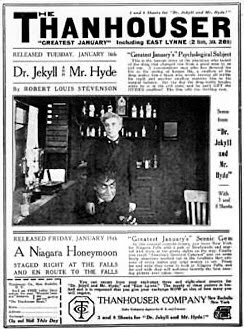


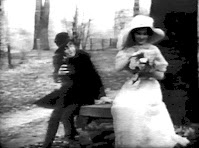
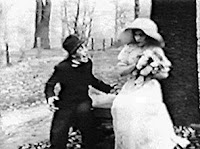

this was so interesting ... I never knew that it was the first US horror film ever made .... lots of fascinating information. I'll be back mwaaaa ha ha.
ReplyDeleteGlad you enjoyed it as much as I did. Look forward to your return.
ReplyDeleteSuper background information - love your blog!
ReplyDeleteThank you for the support.
ReplyDelete